
The Timeless Wonders of Tassili n'Ajjer National Park
Discover the ancient rock art, surreal sandstone formations, and unique desert wildlife of Tassili n'Ajjer National Park in Algeria.
Tassili n'Ajjer National Park, a UNESCO World Heritage Site, is a mesmerizing landscape of sandstone formations, prehistoric rock art, and unique desert flora and fauna. Located in southeastern Algeria, this park spans over 72,000 square kilometers, offering an endless expanse of natural beauty and ancient history. One of the park's main attractions is its incredible collection of rock art, dating back over 10,000 years. These paintings and carvings provide a glimpse into the lives of early human civilizations, depicting scenes of hunting, dancing, and daily activities. The intricate artwork is spread across the rugged terrain, making it a fascinating treasure hunt for visitors. The stunning geological formations of Tassili n'Ajjer are another highlight. The park's landscape is dotted with towering rock arches, deep gorges, and surreal stone pillars that have been sculpted by wind and water over millennia. These natural wonders create an otherworldly atmosphere, perfect for photography and exploration. In addition to its historical and geological significance, Tassili n'Ajjer is also home to diverse plant and animal species. The park's unique ecosystem supports rare desert-adapted flora and fauna, including the Saharan cypress and various reptiles. Birdwatchers will be delighted by the presence of migratory species that visit the park throughout the year.
Local tips in Tassili n'Ajjer National Park
- The best time to visit is during the cooler months from October to April.
- Hire a local guide to help navigate the park and understand the significance of the rock art.
- Bring plenty of water and sun protection, as the desert environment can be harsh.
- Wear sturdy hiking boots for exploring the rocky terrain.
- Check for necessary permits and travel advisories before planning your trip.
The Timeless Wonders of Tassili n'Ajjer National Park
Tassili n'Ajjer National Park, a UNESCO World Heritage Site, is a mesmerizing landscape of sandstone formations, prehistoric rock art, and unique desert flora and fauna. Located in southeastern Algeria, this park spans over 72,000 square kilometers, offering an endless expanse of natural beauty and ancient history. One of the park's main attractions is its incredible collection of rock art, dating back over 10,000 years. These paintings and carvings provide a glimpse into the lives of early human civilizations, depicting scenes of hunting, dancing, and daily activities. The intricate artwork is spread across the rugged terrain, making it a fascinating treasure hunt for visitors. The stunning geological formations of Tassili n'Ajjer are another highlight. The park's landscape is dotted with towering rock arches, deep gorges, and surreal stone pillars that have been sculpted by wind and water over millennia. These natural wonders create an otherworldly atmosphere, perfect for photography and exploration. In addition to its historical and geological significance, Tassili n'Ajjer is also home to diverse plant and animal species. The park's unique ecosystem supports rare desert-adapted flora and fauna, including the Saharan cypress and various reptiles. Birdwatchers will be delighted by the presence of migratory species that visit the park throughout the year.
When is the best time to go to Tassili n'Ajjer National Park?
Iconic landmarks you can’t miss
Tassili N'Ajjer National Park
Explore the breathtaking landscapes and ancient rock art of Tassili N'Ajjer National Park, a UNESCO World Heritage site in Algeria's Sahara Desert.

Tassili n'Ajjer
Explore the breathtaking landscapes and ancient rock art of Tassili n'Ajjer, a UNESCO World Heritage site in Algeria's Illizi region.

كهوف طاسيلي اللوحات
Explore the captivating historical significance of Kehuf Tasilit Luhat in Illizi, Algeria, where ancient architecture meets rich cultural heritage.

Tassili oua-n-Ahaggar
Explore the stunning landscapes and ancient art of Tassili oua-n-Ahaggar, a UNESCO World Heritage site in Algeria's Sahara Desert.

Parc culturel du Tassili
Explore the breathtaking landscapes and rich cultural heritage of Parc culturel du Tassili, a UNESCO World Heritage site in the heart of the Sahara Desert.

Office national du parc culturel du Tassili n'Ajjer
Explore the Tassili n'Ajjer Cultural Park: a UNESCO World Heritage site featuring stunning landscapes, ancient rock art, and rich cultural heritage in Algeria's Sahara Desert.
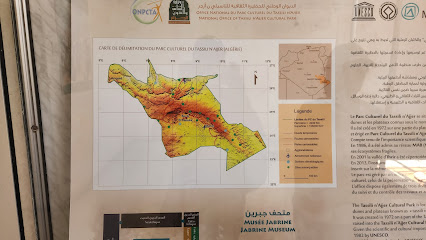
Tassili n'Ahaggar National Parc
Explore the breathtaking landscapes and ancient rock art of Tassili n'Ahaggar National Park, a UNESCO World Heritage site in Algeria.

Unmissable attractions to see
Beni Add Ain Fezza Caves
Explore the enchanting Beni Add Ain Fezza Caves, a historical landmark showcasing stunning natural formations in Algeria's scenic landscape.

Animal Park - Kissir El Aouana
Experience the beauty of wildlife at Animal Park - Kissir El Aouana, a premier zoo and tourist attraction in El Aouana, Algeria, perfect for families and nature lovers.

Chrea National Park
Discover the breathtaking beauty of Chrea National Park, Algeria's premier destination for nature lovers and adventure seekers.

Tassili N'Ajjer National Park
Discover the breathtaking landscapes and ancient heritage of Tassili N'Ajjer National Park, a UNESCO World Heritage site in Algeria.
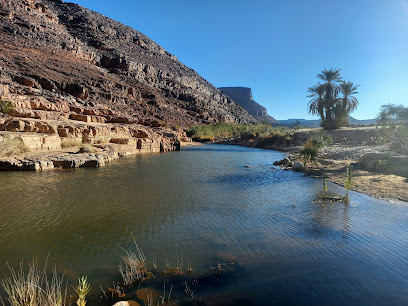
Djurdjura National Park
Discover the awe-inspiring beauty of Djurdjura National Park, a natural haven in Algeria filled with breathtaking landscapes and diverse wildlife.

Ahaggar National Park
Discover the breathtaking landscapes and rich cultural heritage of Ahaggar National Park, Algeria's stunning desert oasis in the heart of the Sahara.
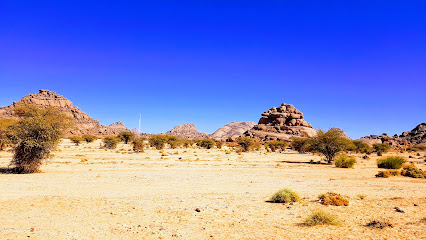
Tassili n'Ajjer
Explore the stunning landscapes and rich history of Tassili n'Ajjer, a UNESCO World Heritage site brimming with ancient art and natural wonders.

National park Taza Jijel, Algeria
Explore the breathtaking landscapes and rich biodiversity of National Park Taza Jijel, a hidden gem on Algeria's Mediterranean coast.

Parc culturel du Tassili
Discover the breathtaking landscapes and rich heritage of Parc culturel du Tassili, a national park in the heart of the Sahara Desert.

Ihrir
Explore Ihrir, a hidden jewel in Bordj El Haouas, Algeria, where stunning landscapes and rich cultural heritage await every traveler.

ڨلتة وانمينا
Discover the breathtaking beauty and ancient heritage of Tassili N'Ajjer National Park in Algeria, a UNESCO World Heritage site brimming with adventure.

Dinosaure de Djanet
Explore the ancient wonders of Dinosaure de Djanet, a captivating tourist attraction in Illizi, Algeria, rich in paleontological significance and breathtaking landscapes.

وادي جرات
Explore the stunning Wadi Gerat in Illizi, Algeria, a natural gem with breathtaking landscapes and unique geological formations.

هضبة تاجلاهين
Explore the stunning trails of Hadba Taglahi for an unforgettable hiking adventure amidst breathtaking landscapes and tranquil nature.

تين اضريلال
Discover the breathtaking beauty and rich culture of Tin Adjerlil, a hidden gem in Bordj El Haouas, Algeria, perfect for nature lovers and cultural explorers.

Essential places to dine
Tassili N'Ajjer National Park
Discover the enchanting landscapes and ancient art at Tassili N'Ajjer National Park – Algeria's breathtaking national treasure.

تاج محل بن عكنون
Experience authentic Indian flavors at Taj Mahal Ben Aknoun, where every dish tells a story steeped in tradition and spice.

La Palmeraie Restaurant مطعم النخيل
Discover authentic Moroccan flavors at La Palmeraie Restaurant in Dély Ibrahim – a culinary journey through Algeria's rich heritage.

Le Bardo Restaurant مطعم الباردو
Experience authentic Algerian cuisine at Le Bardo Restaurant in Sidi M'Hamed – where every dish tells a story.

Le Tantra
Discover the vibrant flavors of Algeria at Le Tantra - a culinary gem in El Madania offering exquisite dishes and warm hospitality.

Tassili n'Ajjer
Explore Tassili n'Ajjer: A breathtaking mountain range rich in geological wonders and ancient cultural heritage waiting to be discovered.

Le Bon Gibier
Experience authentic Algerian cuisine at Le Bon Gibier in El Madania - a culinary haven for food enthusiasts.

Restaurant El Djenina مطعم الجنينة
Discover authentic Algerian cuisine at Restaurant El Djenina - where every meal tells a story.
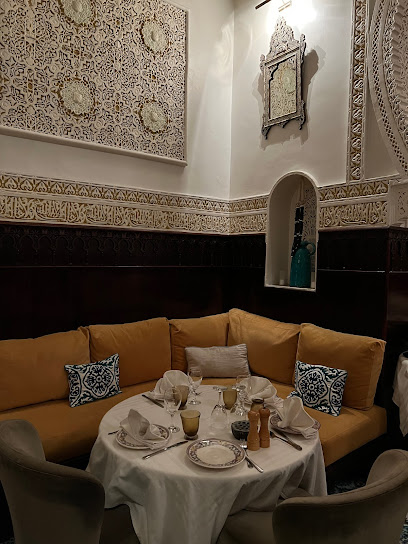
Les Orientalistes
Discover the rich flavors of Algeria at Les Orientalistes – where traditional meets contemporary in a vibrant dining experience.

Le 101 restaurant
Discover authentic Algerian cuisine at Le 101 Restaurant in Chéraga—where every meal tells a story.

Restaurant tassili
Experience authentic Algerian cuisine at Restaurant Tassili in Staoueli - where every meal tells a story of tradition and flavor.

Café Tassili
Discover Café Tassili: A cozy café offering local flavors and inviting ambiance in Hamma Bouziane.

Traiteur Le Tassili
Experience authentic Algerian flavors at Traiteur Le Tassili in Kouba - a hidden gem for culinary adventurers.

Restaurant Tassili
Experience authentic Algerian cuisine at Restaurant Tassili in Casbah - where tradition meets flavor.

Tassili ahagar
Discover authentic Algerian culture at Tassili Ahagar, a traditional teahouse in Tamalous offering exquisite teas and a warm atmosphere.

Markets, malls and hidden boutiques
Bab Ezzouar Mall
Explore Bab Ezzouar Mall, Algiers' ultimate shopping destination with a variety of brands, delicious dining, and entertainment options for a perfect day out.

Tassili N'Ajjer National Park
Explore the stunning landscapes and ancient rock art of Tassili N'Ajjer National Park, Algeria's jewel of natural beauty and historical significance.
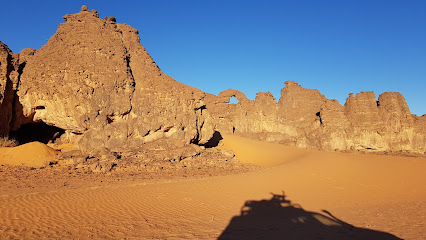
Tassili n'Ajjer
Explore the breathtaking Tassili n'Ajjer, a UNESCO World Heritage Site with stunning landscapes, rich biodiversity, and ancient rock art that tells a story.

AMADHAL Store
Explore AMADHAL Store in Kouba, Algiers – a treasure trove of unique handicrafts and art pieces reflecting Algeria's rich culture.

Supermarket
Discover the heart of Illizi at the local supermarket, where authentic flavors and vibrant local culture come together in an unforgettable shopping experience.

Sktm .BEH
Explore Sktm .BEH, Bordj El Haouas' premier outlet mall, where every shopping trip becomes a delightful adventure filled with amazing deals and local charm.

Parc culturel du Tassili
Discover the enchanting landscapes and ancient history at Parc culturel du Tassili, a national park showcasing Algeria's natural beauty and cultural heritage.

ERROSTOMIA ROSTECH
Explore ERROSTOMIA ROSTECH: A vibrant shopping mall in Illizi, blending local culture with a modern retail experience.

Fadnoun فضنون
Discover the authentic spirit of Illizi at Fadnoun, where local craftsmanship meets warm hospitality in a unique shopping experience.

auto DZ
Explore Auto DZ in Illizi for a comprehensive range of car accessories, enhancing performance and style for every vehicle enthusiast.

تغليف السيارات، تغليف و تلميع الأضواء، لوحات الترقيم، فيمي
Discover the charm of local shopping and craftsmanship at تغليف السيارات, Illizi's vibrant shopping mall, offering unique products and a friendly atmosphere.

الف ليلة وليلة للعطور 1001parfums
Explore the captivating world of fragrances at 1001 Parfums in Illizi, a paradise for beauty and perfume lovers.

مؤسسة البخاري
Explore the charm of مؤسسة البخاري, your essential convenience store in Illizi, Algeria, for snacks, beverages, and local delights.

إليزي شوب
Explore Illizi Bazar: A vibrant marketplace bursting with local culture, crafts, and authentic Algerian flavors.
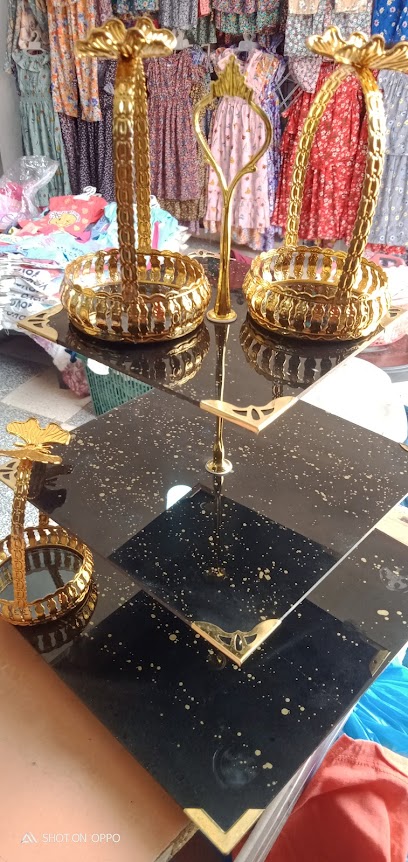
محل صناعه تقليدي لولاية ايليزي
Explore the heart of Illizi's craftsmanship at the Traditional Craft Store, where culture and artistry come together in beautiful handmade treasures.

Essential bars & hidden hideouts
Tassili n'Ajjer
Explore the breathtaking landscapes and ancient rock art of Tassili n'Ajjer, a UNESCO World Heritage site in Algeria's stunning desert region.

Club gentleman
Discover Club Gentleman, a lively bar and grill in Bordj El Kiffan, serving up delicious grilled delicacies and a vibrant social atmosphere.

Local Phrases about Tassili n'Ajjer National Park
-
- HelloAslema
[as-le-ma] - GoodbyeBeslama
[bes-la-ma] - YesIh
[ih] - NoLa
[la] - Please/You're welcomeAfek
[a-fek] - Thank youShukran
[shuk-ran] - Excuse me/SorrySamahani
[sa-ma-ha-ni] - How are you?Labas?
[la-bas] - Fine. And you?Bessif. Ou inti?
[bes-sif. u in-ti] - Do you speak English?Tetkellem inglizi?
[te-kel-lem in-gli-zi] - I don't understandMa fhemtch
[ma fhem-tch]
- HelloAslema
-
- I'd like to see the menu, pleaseNheb nshuf lqima, afek
[nheb n-shuf l-ki-ma, a-fek] - I don't eat meatAna maakolch lhem
[a-na ma-a-kol-ch l-hem] - Cheers!Saha
[sa-ha] - I would like to pay, pleaseNheb nsef, afek
[nheb n-sef, a-fek]
- I'd like to see the menu, pleaseNheb nshuf lqima, afek
-
- Help!S3dini!
[s-3-di-ni] - Go away!Rou7!
[rouh] - Call the Police!S3dni l7rasa!
[s-3d-ni l-hra-sa] - Call a doctor!S3dni tabib!
[s-3d-ni ta-bib] - I'm lostN3atik
[n-3a-tik] - I'm illAna mrid
[a-na m-rid]
- Help!S3dini!
-
- I'd like to buy...Nheb nechri...
[nheb nesh-ri...] - I'm just lookingAna fakar f les vitrines
[a-na fa-kar f les vit-rines] - How much is it?Chhalou?
[chha-lou] - That's too expensiveHadak ghali bzzaf
[ha-dak gha-li b-zaaf] - Can you lower the price?Wach t9der tgoum sawar?
[wa-ch t-gh-der t-goum sa-war]
- I'd like to buy...Nheb nechri...
-
- What time is it?Ch7al f7al?
[ch-hal f-hal] - It's one o'clockSaa wahd
[saa wahd] - Half past (10)L nisf b3d l 3achra
[l nisf b-3d l-a-chra] - MorningSba7
[s-ba7] - AfternoonDohr
[do-hr] - EveningL3achiya
[l-3a-chi-ya] - YesterdayM3araf
[m-3a-raf] - TodayLyawm
[l-yawm] - TomorrowGhadwa
[gha-dwa] - 1Wahd
[wahd] - 2Jouj
[jouj] - 3Tlata
[t-la-ta] - 4Arba3
[ar-ba-a] - 5Khamsa
[kham-sa] - 6Setta
[set-ta] - 7Seb3a
[seb-a-a] - 8Tamania
[ta-ma-ni-a] - 9Tsa3da
[tsa-a-da] - 103achra
[a-chra]
- What time is it?Ch7al f7al?
-
- Where's a/the...?Fein...
[fein] - What's the address?Chno l3nwan?
[chno l-3n-wan] - Can you show me (on the map)?Wach t9der tgoul li (3la lkhariita)?
[wa-ch t-gh-der t-goul li (3la l-kha-rii-ta)] - When's the next (bus)?Matach tbda lba3da (lbas)?
[ma-tach t-b-da l-ba-a-da (l-bas)] - A ticket (to ....)Tikita (li ...)
[ti-ki-ta (li)]
- Where's a/the...?Fein...
History of Tassili n'Ajjer National Park
-
Tassili n'Ajjer National Park is renowned for its extensive collection of prehistoric rock art, which dates back to 6000 BCE. These ancient paintings and carvings provide a fascinating glimpse into the lives of the early human inhabitants of the Sahara, depicting scenes of hunting, herding, and daily activities. The art reflects the changing environment of the region, showcasing its transformation from a lush savannah to the arid desert it is today.
-
During the Neolithic period, Tassili n'Ajjer was a thriving center for human settlement. Evidence of Neolithic communities can be seen in the numerous archaeological sites scattered across the park. These include remnants of stone tools, pottery, and burial sites, indicating a well-organized society engaged in farming, animal husbandry, and trade.
-
The Tuareg, a nomadic Berber people, have inhabited the region of Tassili n'Ajjer for centuries. Known as the 'blue people' due to their indigo-dyed clothing, the Tuareg have developed a rich culture and unique way of life adapted to the harsh desert environment. Their deep connection to the land is evident in their oral traditions, music, and art, which continue to be an integral part of the region's cultural heritage.
-
In the early 20th century, French colonial explorers and archaeologists began to document the rock art and archaeological sites of Tassili n'Ajjer. Notable figures such as Henri Lhote led extensive expeditions, bringing international attention to the park's historical significance. Their detailed records and publications have been crucial in preserving the knowledge of Tassili n'Ajjer's ancient heritage.
-
In 1982, Tassili n'Ajjer was designated as a UNESCO World Heritage Site, recognizing its outstanding universal value. This status has helped to protect and conserve the park's unique cultural and natural resources, ensuring that future generations can continue to study and appreciate its rich history. The UNESCO designation also promotes sustainable tourism, encouraging visitors to experience the park's beauty while respecting its fragile environment.
-
Ongoing archaeological research in Tassili n'Ajjer continues to uncover new insights into the prehistoric and historic periods of the region. Recent studies have utilized advanced technologies such as satellite imagery and 3D modeling to map and analyze the rock art and ancient settlements. These efforts contribute to a deeper understanding of the region's past and the development of human societies in the Sahara.
Tassili n'Ajjer National Park Essentials
-
Tassili n'Ajjer National Park is located in southeastern Algeria, near the border with Libya. The nearest international airport is Djanet Inedbirene Airport in the town of Djanet, which is about 10 kilometers from the park. From Algiers, the capital of Algeria, you can take a domestic flight to Djanet. The flight takes approximately 3 hours. Alternatively, you can reach Djanet by road, but this is a long journey and not recommended due to the challenging terrain and security concerns.
-
Within Tassili n'Ajjer National Park, the primary mode of transportation is 4x4 vehicles, which are well-suited to the rugged and sandy terrain. Local operators offer guided tours that include transportation. Walking and hiking are also popular ways to explore the park, especially for accessing the famous rock art sites. It is advisable to hire a local guide who is familiar with the terrain and the cultural significance of the sites.
-
The official currency in Algeria is the Algerian Dinar (DZD). Credit cards are not widely accepted in Djanet or within the park, so it is essential to carry sufficient cash. ATMs are available in major cities but may not be reliable in smaller towns like Djanet. It is advisable to withdraw cash in Algiers or another major city before traveling to Tassili n'Ajjer.
-
Tassili n'Ajjer National Park is generally safe, but travelers should exercise caution. Avoid traveling alone and always inform someone of your itinerary. Be cautious of your surroundings and avoid displaying valuable items. While crime rates targeting tourists are low, it is still advisable to stay vigilant. Certain border areas near Libya may have heightened security concerns, so always check the latest travel advisories.
-
In case of an emergency, contact local authorities immediately. The emergency number in Algeria is 14 for medical emergencies and 17 for police assistance. Djanet has a small medical facility, but for serious medical issues, it is advisable to seek help in Algiers. Ensure you have comprehensive travel insurance that covers medical evacuation. Always carry a basic first-aid kit and essential medications.
-
Fashion: Do dress modestly, especially in rural and remote areas. Avoid wearing revealing clothing. Religion: Do respect Islamic customs and traditions. Public Transport: Do be respectful and follow local customs when using shared transport. Greetings: Do greet people with a handshake or a simple nod. Eating & Drinking: Do try local foods and accept hospitality graciously. Don’t eat or drink in public during Ramadan, as it is considered disrespectful.
-
To experience Tassili n'Ajjer like a local, take part in a traditional Tuareg tea ceremony. Engage with local guides who can provide insights into the cultural and historical significance of the rock art and landscapes. Visit the local markets in Djanet to buy traditional handicrafts and souvenirs. For a unique experience, camp under the stars in the Sahara desert and witness the stunning night sky.
Nearby Cities to Tassili n'Ajjer National Park
-
Things To Do in Tozeur
-
Things To Do in Tripoli
-
Things To Do in Djerba
-
Things To Do in Zliten
-
Things To Do in Leptis Magna
-
Things To Do in Misrata
-
Things To Do in Sfax
-
Things To Do in Monastir
-
Things To Do in Sousse
-
Things To Do in Constantine
-
Things To Do in Setif
-
Things To Do in Hammamet
-
Things To Do in Annaba
-
Things To Do in Tunis
-
Things To Do in Bejaia








